I chose a very special photograph for the cover photo of this week Travellers Isle article. It was from Ms. Claire Hare’s family tour, and they were the very first family to travel Sri Lanka with Travellers Isle.
I still remember what Ms. Claire wrote on her feedback form. “Everything was great, however, there were too many activities.”. This taught us a very important lesson. You have to be very picky with your excursions when planning a Sri Lanka family holiday. Choosing the right excursions, right times, and finding the right balance of activities and leisure are the basic principles of any great family trip.
This is often easier said than done. That is why I thought of writing this article as a continuation of our article, “How to plan a Sri Lanka itinerary that kids love”.
From village tours to mountain hikes, and cookery lessons to train rides, in this article, you will read about the best family-friendly things to do and see in Sri Lanka.
Things to do in Sri Lanka with family
According to the feedback from our guests, the below list of excursions and sightseeing are the best things to do in Sri Lanka with family. Please note, I am not going to include beach stays into this list, as I believe they are a little too obvious to be included.
1. Taking a village tour
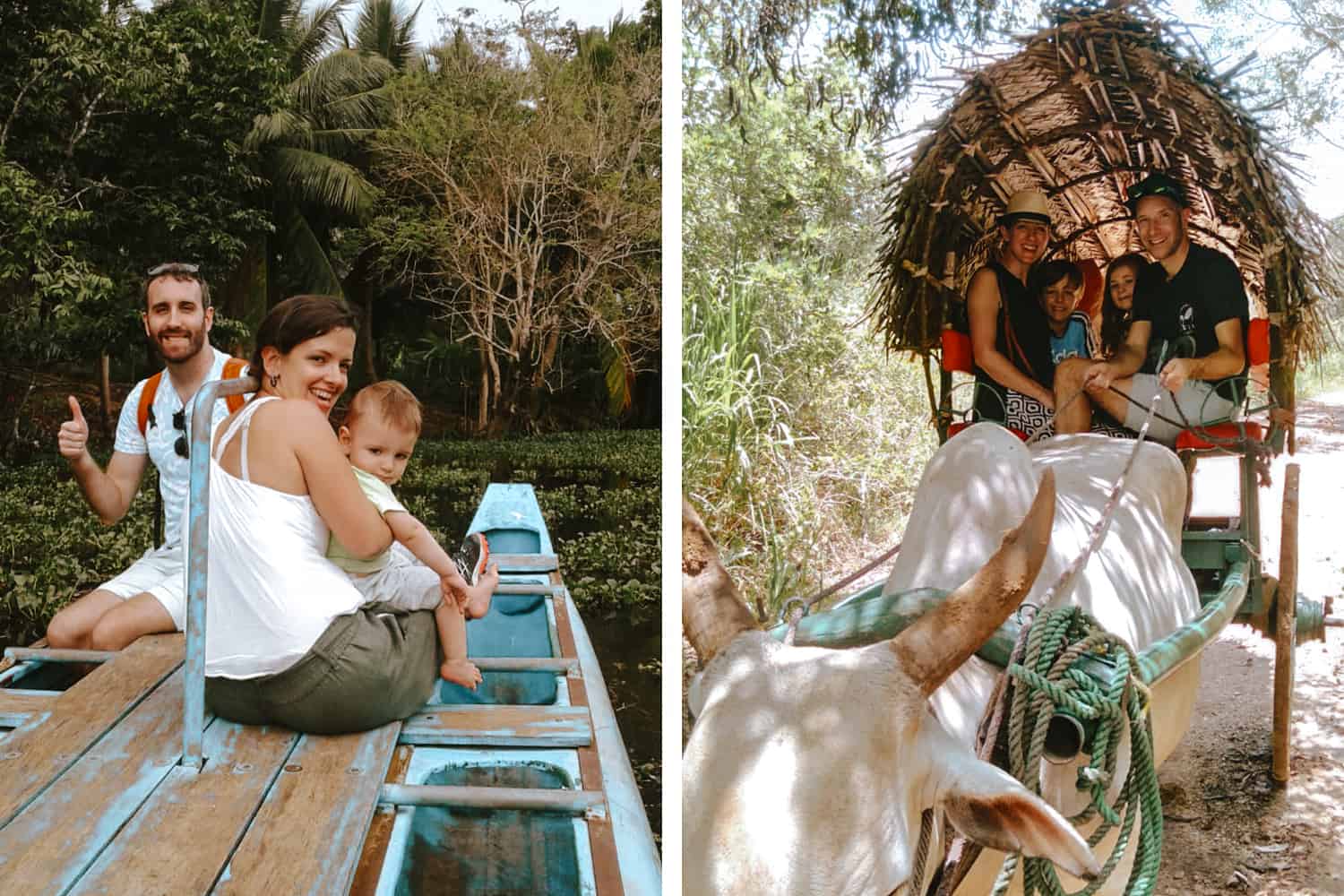
One of the most exciting family adventures in Sigiriya is the village tour. If you are travelling with a travel agency similar to Travellers Isle, you may get their assistance to arrange a village tour. If not, you may ask your hotel in Sigiriya to book one for you.
A typical village tour includes three modes of transport: the slow-paced, old-fashioned cart and catamaran, and the more modern and speedier tuk-tuk. Your family will be able to witness local life, flora and fauna as the bullock-drawn carts take you leisurely along a rustic road (and maybe across lush paddy fields) to a reservoir.
Board a catamaran at the reservoir and glide across the water amidst water lilies and blue lotuses! You might even want to attempt paddling the vessel yourself, making your way across to the opposite bank where a clay house with a thatched roof awaits you.
In the open kitchens of these cozy village dwellings, you will be able to see your wood-fired, authentic Sri Lankan lunch or tea being prepared. Sri Lankan culinary practices include skinning and scraping coconuts plus crushing and mixing spicy ingredients using an array of stone and/or wooden kitchen appliances such as the pol ula, mirisgala, vangediya and molgaha. Not only can you witness these activities, but you will also be most welcome to take part in them!
After your short respite in the cool, clay house, a tuk-tuk ride will take you back to where this exciting tour began. Riding in the tuk-tuk across the local landscape will treat you to the beauty of north central Sri Lanka.
These well-designed 3-hour circular tours welcome you into and transport you across the lives and landscapes inhabited by low-income village residents of rural Sri Lanka. Your appreciation of these tours not only enrich your holiday, but their lives.
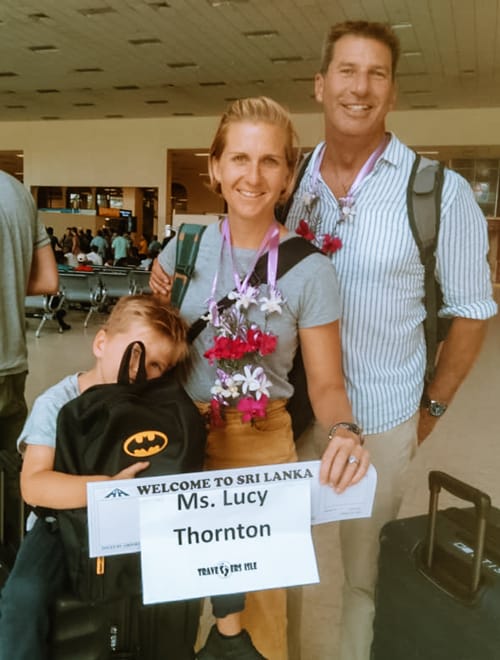
Would you like a Sri Lanka trip like Lucy's?
We had the pleasure of assisting Lucy's family on their two-week holiday in Sri Lanka, and they absolutely loved it. Would you also like a hassle-free family holiday? Please drop us a message specifying your requirements, and we will get back to you with a tailor-made Sri Lanka tour package within 24 hours.

Would you like a Sri Lanka trip like Lucy's?
We had the pleasure of assisting Lucy's family on their two-week holiday in Sri Lanka, and they absolutely loved it. Would you also like a hassle-free family holiday? Please drop us a message specifying your requirements, and we will get back to you with a tailor-made Sri Lanka tour package within 24 hours.
2. Climbing Sigiriya Rock Fortress
There are many historical sites in Sri Lanka, but we recommend Sigiriya for families over any other historical sites in Sri Lanka, because of the sense of adventure that it offers to the traveller.
The ideal time to visit this site is around 7.00 am, when the ancient city can be explored in the light morning sunshine sans the crowd that accumulates later on in the day.
At Sigiriya what awaits you is an excursion across an ancient city and a scenic hike up a rock fortress to what remains of a majestic royal palace. This ancient urban complex was built in the 5th century AD by King Kashyapa. It is a UNESCO World Heritage site and is home to an assortment of leftovers from the past: elaborate gardens, moats, ramparts, still functioning water fountains, ancient wall-inscribed Sinhala literature, and world-famous wall paintings.
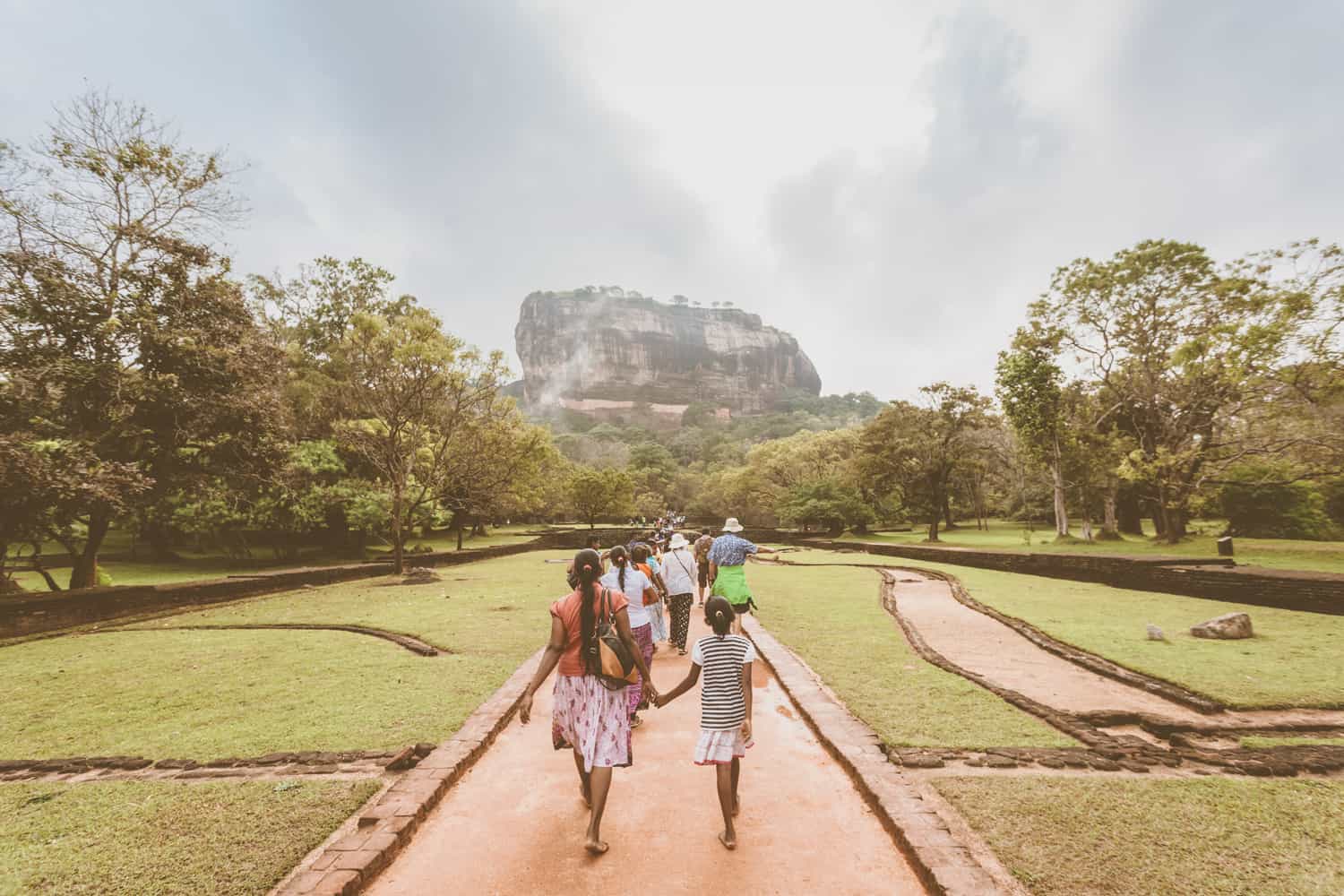
The most prominent feature of the ruins of this city is its 200-meter high Sigiriya Rock, also called the Lion's Rock, that dominates the surrounding landscape. This steep rock and the entire complex itself are steeped in stories of royal betrayal, fear and power, and today stand as evidence of the architectural, engineering and hydraulic knowledge of our forefathers.
The massive Lion's Rock can be reached after walking along ancient stone-paved, brick-lined pathways that take you between huge rocks and across green gardens. These lush gardens are home to ruins of the ancient royal city.
The ascent to the top of the Lion rock begins at the stone-etched paws of the Lion Rock. Then, the journey continues along a relatively recently installed iron stairway up to King Kashyapa’s haven. At the top are the ruins of the king’s palace and mesmerizing views of the surrounding plains.
Following King Kashyapa’s death, the king’s royal complex was converted into a Buddhist monastery which lasted till about the 14th century AD. However, at present, it is a non-religious site which provides its numerous visitors leeway to wear comfortable, yet modest, clothing of their choice. In terms of footwear, we suggest any type of comfortable, covered shoes. Flip-flops may not be the ideal type of footwear to climb the Lion’s Rock.
3. Taking a jeep safari in Minneriya National Park
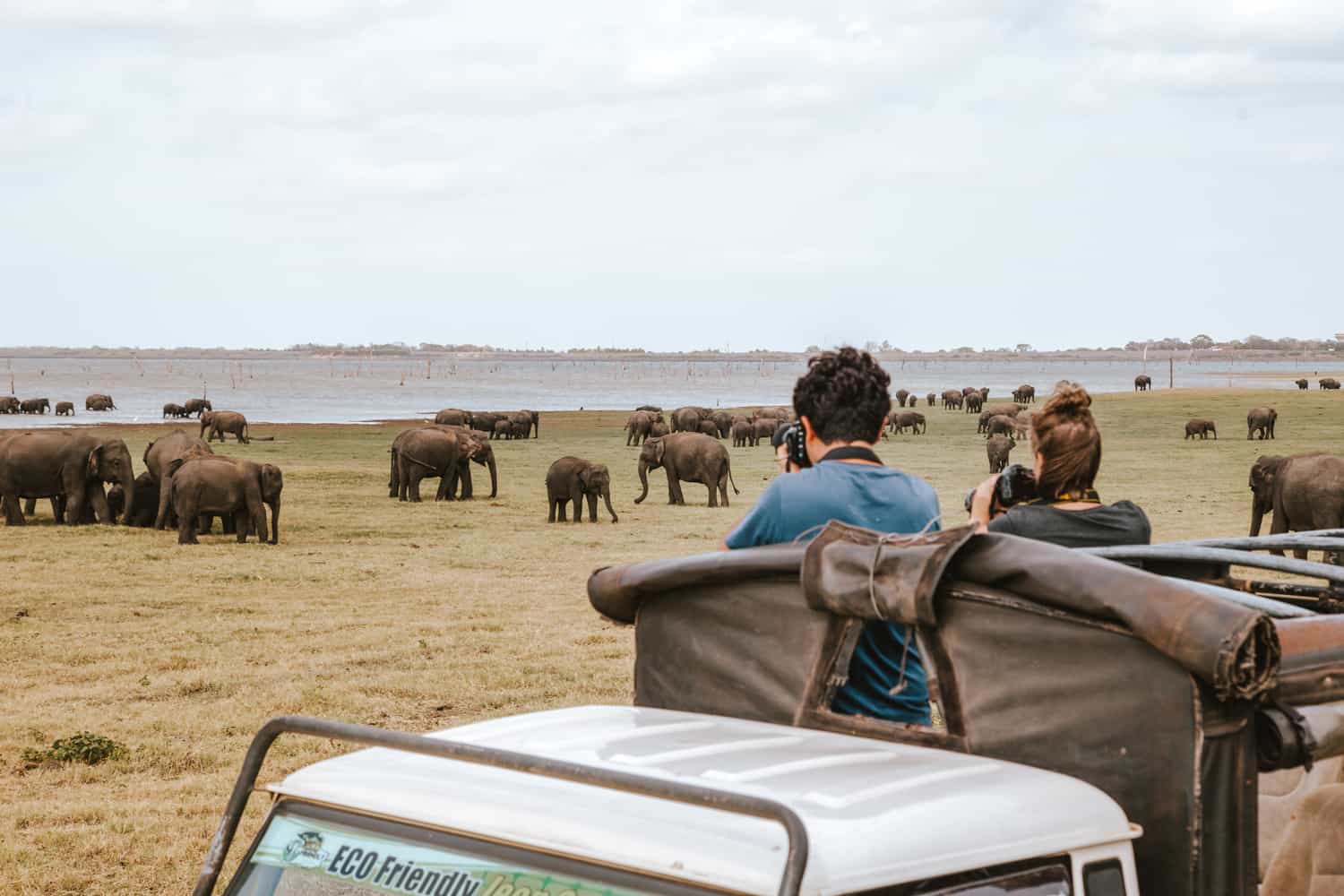
Jeep safaris are no brainers when travelling with young children. One such exciting excursion that you can enjoy in Sri Lanka is Minneriya national park jeep safari.
Declared a wildlife sanctuary in 1938, this Park is presently a popular spot among nature lovers as a herd of at least fifty elephants could be viewed at Minneriya per visit.
The best time of year to schedule your visit to the Minneriya Park is from July to September, which is the dry season there. As the water levels of the Minneriya Reservoir recede during the dry spell, elephants frequent the park and gather around the reservoir to graze and quench their thirst. This event, the gathering of more than 300 elephants around the Minneriya reservoir, is considered as the largest elephant gathering in the world.
Spotted deer, wild boars, crocodiles, monkeys, and different types of birds too can be sighted at the Minneriya Park, as you travel in the slow-moving jeeps driven by experienced drivers. However, the kids will agree the highlight of this unique wildlife experience is its graceful elephants.
4. Enjoy a scenic train ride
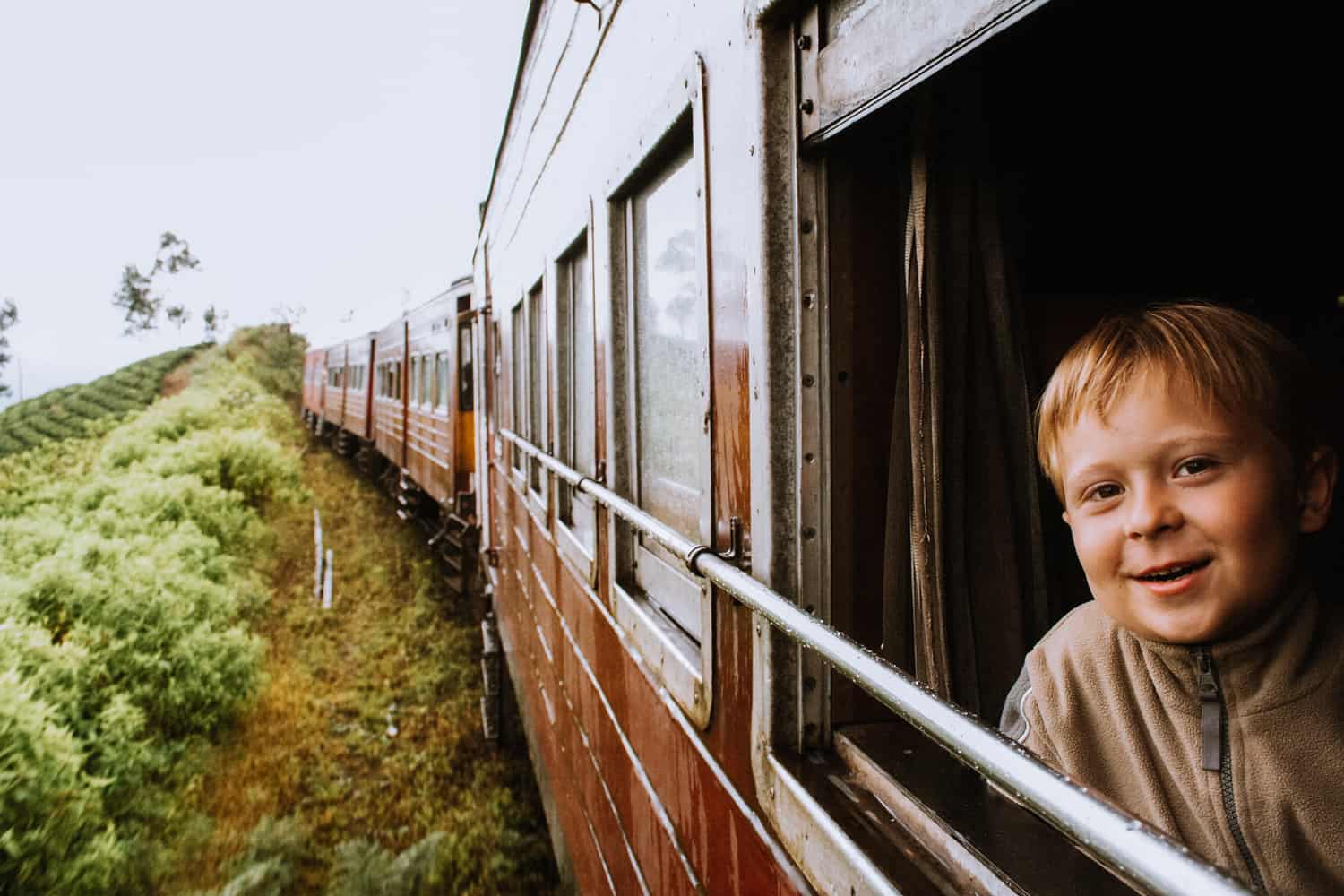
Another family adventure awaits you along the Ella-Nanu Oya rail route. This route is, without doubt, Sri Lanka's most scenic rail ride and probably one of the most spectacular train journeys in the whole world!
What this ride has in store for you is a chugging journey across tea estates, pine forests and tunnels, passing waterfalls, rural settlements and towns in the rolling emerald mountains of Sri Lanka.
To ensure a comfortable journey for you and your family, make sure to reserve seats. In my opinion, the best seat classes to book for this journey are 2nd class and 3rd class, both reserved. The Ella-Nanu Oya train adventure is best experienced seated in a carriage with open windows; nothing beats the cool mountain breeze caressing your face! The first class observation saloons have no windows opening into the scenery. Travelling in unreserved carriages will not guarantee seats.
Securing seats on this breathtaking rail adventure can be tough, so do not forget to book tickets well in advance.
To help you avoid any inconvenience in planning the Ella-Nanu Oya journey, Travellers Isle has compiled the how, when and where of train ticket booking in Sri Lanka in this article.
5. Enjoy Little Adam’s Peak
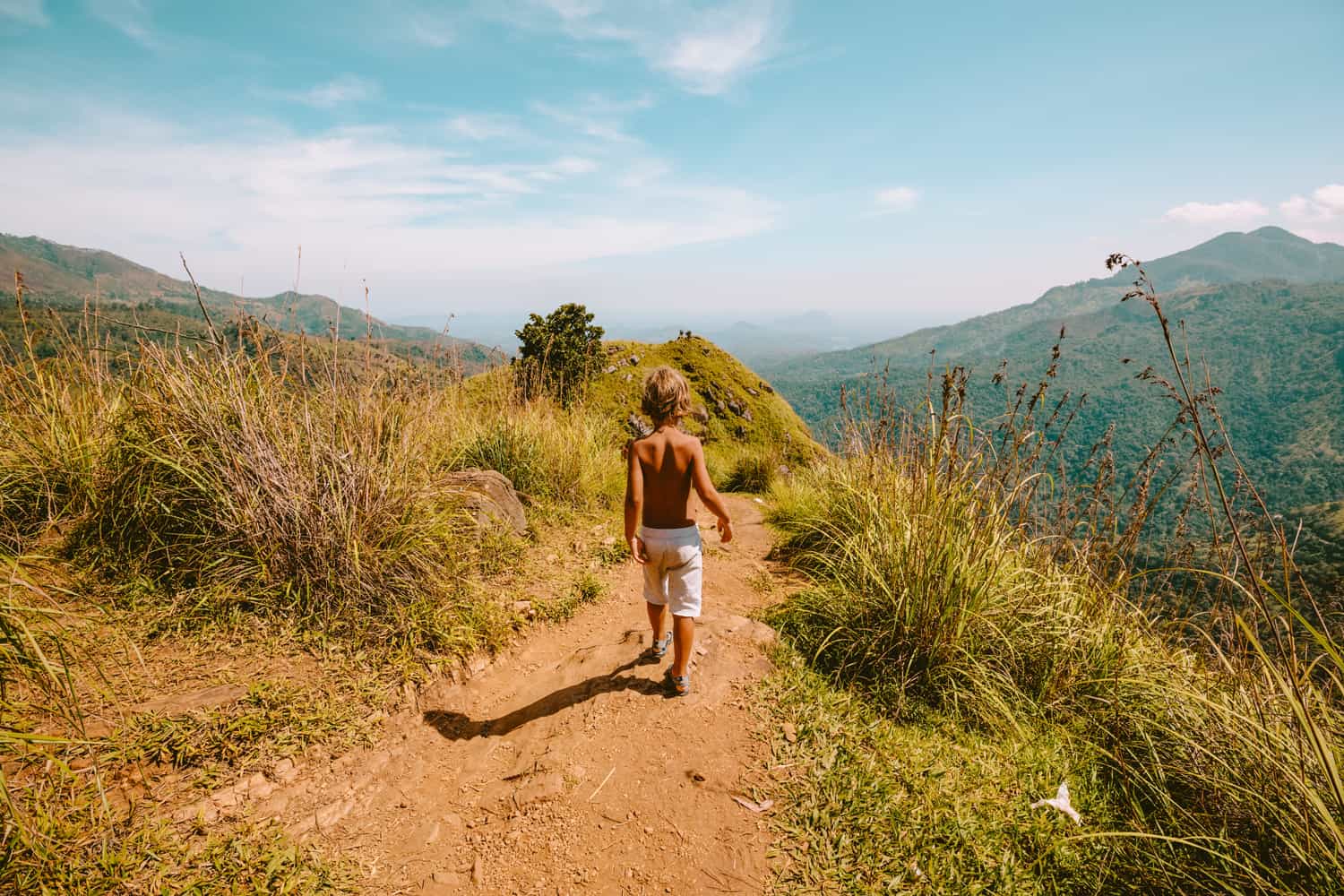
A hike up the Little Adam’s Peak brings you to a marvelous look-out spot from which to survey the mountain sides lush with waterfalls and greenery. From this vantage point, you can also see the Sri Lankan hill country gradually transitioning into plains. Rumour has it that, on very clear days, you can even see Hambanthota in the southern coast of Sri Lankan from Little Adam’s Peak!
The mountain, Little Adam’s Peak is named after a much larger and more sacred mountain of Sri Lanka, Adam’s Peak. But, in no way is the climb up Little Adam’s Peak as tough as hiking its bigger counterpart. Even the tiniest feet can take this adventure with some help from their parents.
The path up the Little Adam’s Peak begins at the 98 Acres Resort and travels across tea plantations. Sections of this track have steps. But, as you reach nearer the peak, the path turns uneven, and the journey becomes slightly more adventurous. However, this trek up the hill is worth the trouble for the panoramic views of the surrounding area. The scenery is nothing but spectacular!
6. Visit Temple of the Tooth
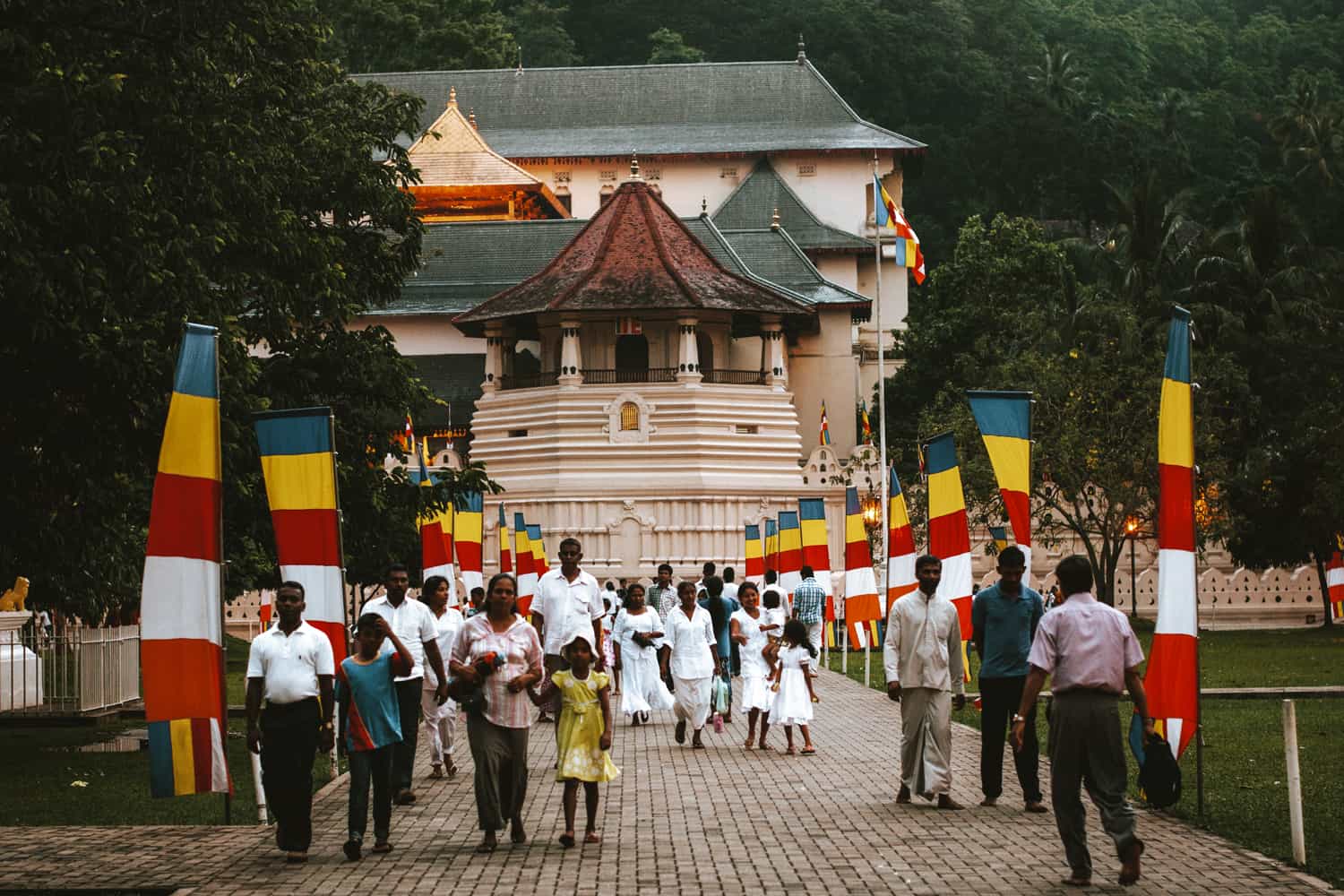
If you are only visiting one temple during your Sri Lanka holiday with your children, make it the Temple of the Tooth in Kandy. The significance of this temple is manifold.
The history of the Temple of the Tooth reflects the island's colonial past and the resilience of our forefathers. It is the third location in Kandy within which the Tooth Relic was enshrined. The Relic's two previous shelters were destroyed by the Portuguese and the Dutch respectively.
The tooth relic, after its arrival in Sri Lanka in the 4th century BC, was relayed from one ancient capital to another, until it finally came to rest in the Kandyan Kingdom in 1595. In the past, the Relic was a sign of royalty; it determined who had the power to reign. Today, for Buddhists worldwide, the Relic is considered to be a personification of the Lord Buddha.
At this historical site, you can witness the daily rituals performed in devotion of the Tooth Relic, thrice a day (at 5.30 am, 9.30 am and 6.30 pm). The rituals include traditional drumming and the playing of other local instruments, and various offerings to the Sacred Tooth. In our experience, these are the best times to visit the Temple of the Tooth with your little ones.
In the month of August (in some years in July), the Temple and the Kandyan city itself comes alive in preparation for the Kandy Perahera, a procession that includes dancers, drummers, stilt walkers, and tuskers cloaked in colourful robes that parade the Sacred Tooth across the city of Kandy. The origins of the perahera run way into the past; there are records of the procession in written documents that date as far back as the 5th century AD.
Apart from Buddhist rituals and shrines, the Temple premises are home to shrines of Hindu gods and goddesses. This reflects the infusion of Indian religious beliefs into the local Sri Lankan Buddhist practices. These religious customs crossed the Palk Strait and reached ancient Sri Lanka along with the Indian princesses who married Sri Lankan kings.
Like in all Buddhist temples in Sri Lanka, entrance into the Temple of the Tooth requires visitors to remove their shoes and hats. However, if you find walking barefoot uncomfortable, you can keep on your socks. All visitors, male and female alike, are expected to wear clothes that cover shoulders and reach below knee level.
7. Discover Horton Plains
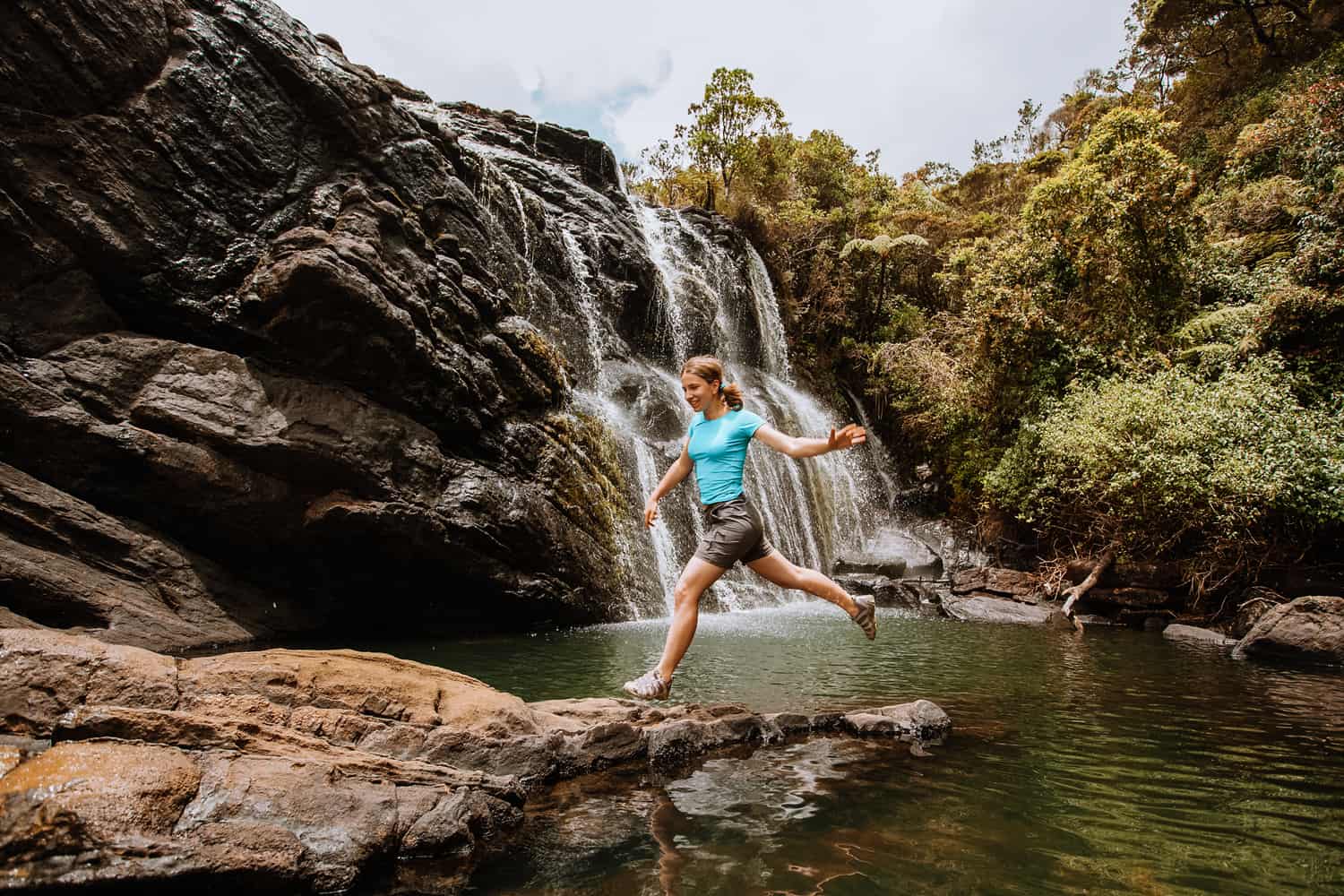
The journey across the Horton Plains falls along an 8 km circular route. As you have to be at the national park between 6.00 am to 10.00 am to enjoy its mesmerizing scenery, we usually do not recommend it for families with young children. However, if your little ones do not mind getting up a bit early, be sure to enjoy this great gift of nature.
In the early mornings, the environment is breathtaking with the gradually emerging sun shining through the veils of mist and the cool of dawn. You will be able to see a range of animals including the sambar deer and wild boar, and birds that are endemic not only to Sri Lanka but also to the Horton Plains. Endangered species such as the purple-faced langur and the Sri Lankan leopard inhabit the Plains, although sighting the latter is a rare experience.
The Great World's End Drop and the Baker's Falls are two popular tourist attractions within the boundaries of this Park.
World's End refers to the top of a sheer cliff believed to be about 1200 m tall. On misty days, the valley at the foot of the cliff can be partially or completely covered in mist and this spectacle is probably what has earned this spot the name of World's End. The Baker's Falls is a beautiful 20 m waterfall named after a 19th century British explorer and game hunter, Samuel Baker.
Due to its environmental significance, stringent measures are in place to protect the Plains. No plastic is allowed in the Park, except for water bottles of which the seal and label are removed before entering the Park. The rules also do not permit the use of drones within the Park.
8. Enjoy Yala National Park with family
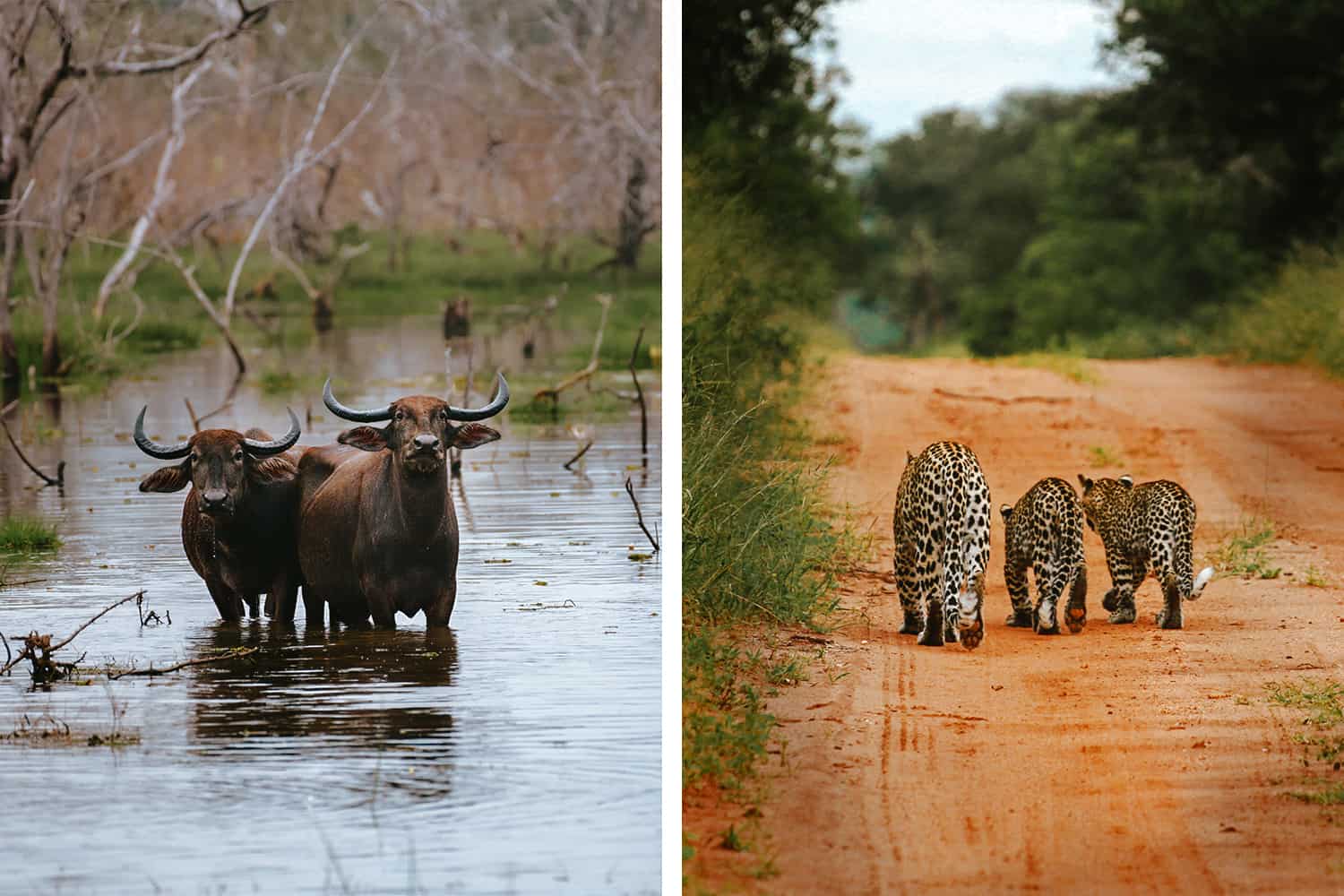
While the Minneriya Wildlife Sanctuary is renowned for its elephant herds, the Yala National Park is famous for sightings of the leopard endemic to Sri Lanka. In fact, the density of leopard population per square kilometre at Yala is unparalleled.
Due to the array of mammals, birds, reptiles, amphibians and fish that have made Yala their home, the park was declared a wildlife sanctuary way back in 1900. In 1938, it was named a national park.
Apart from leopards, the Yala National Park is home to elephants, spotted deer, sloth bears, jackals, butterflies, wild boar, crocodiles, and wild buffaloes. The Park is also an Important Bird Area.
The best time of day to visit Yala is between 6.00 am and 9.00 am. More animals, especially leopards, can be sighted within this timeframe. However, if it is a struggle getting your sleepy heads ready early in the morning, you may visit the national park around 3.00 pm for a late afternoon jeep safari.
The ideal time of year to visit the Yala National Park is from February to August, which is the region's dry season. With the water levels gradually depleting within this period, the Park's inhabitants are drawn into more open spaces as they look to quench their thirst.
9. Discover Gal Oya
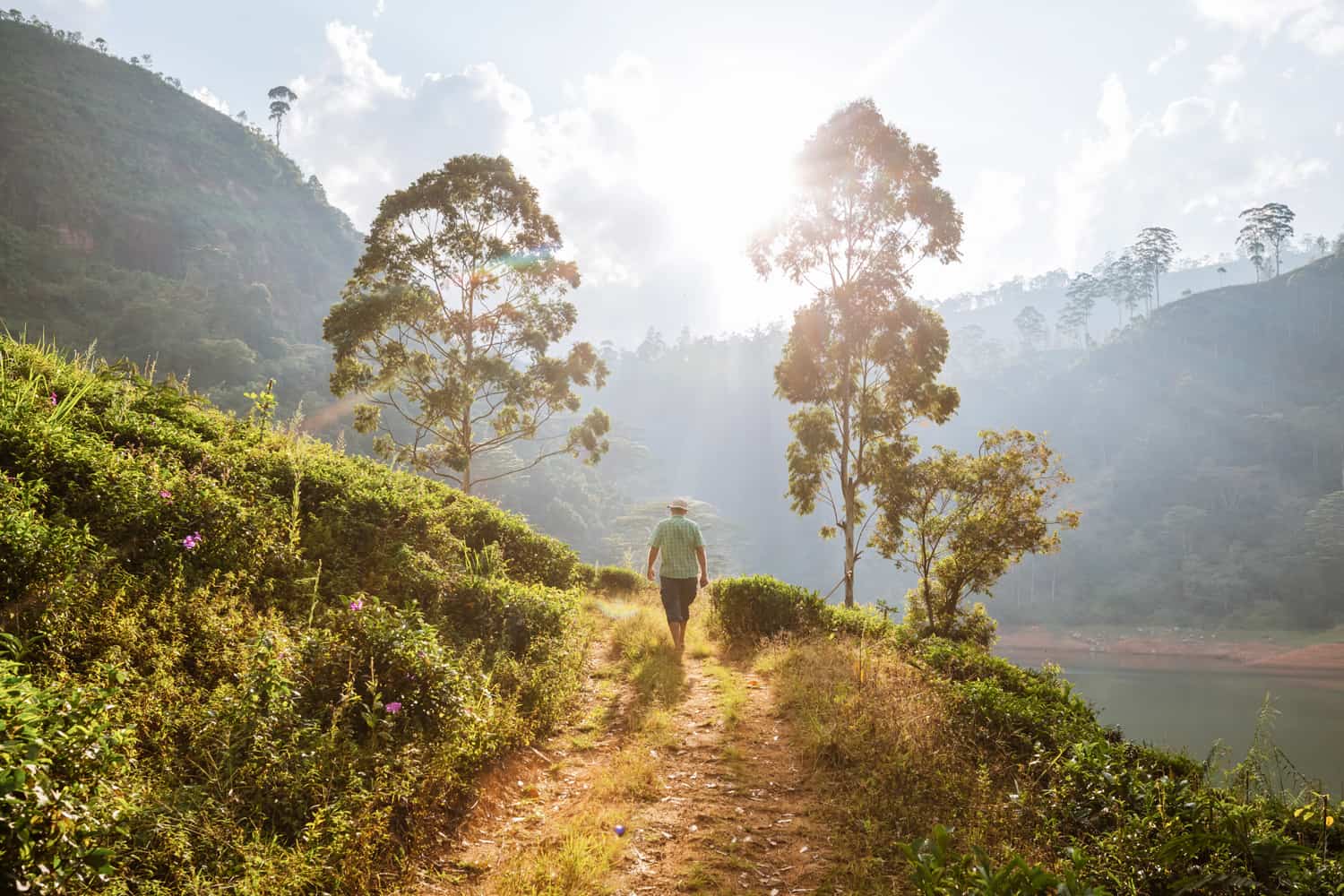
Gal Oya offers all manner of nature excursions, be it boat safaris, cycling tours, jeep trips or hikes. Each of these presents to you a different perspective of the emerald, mountainous countryside!
The excursions that you can enjoy in Gal Oya as a family revolves around the Gal Oya National Park, Senanayake Reservoir, and the scenic nature trails in Gal Oya.
Declared open in 1954, the Gal Oya National Park was established to preserve the main catchment area of the Senanayake Reservoir that lies within the Park. The park is home to a variety of flora and fauna that includes about 150 species of aquatic birds, elephants, crocodiles, the occasional leopard, and also medicinal plants.
The scenery at the Senanayake Reservoir is spectacular; it is ringed with rugged mountain ranges that stand bluish-grey against the horizon.
An evening boat safari across the Senanayake Reservoir will unfurl to you a unique spectacle: swimming elephants! These gentle giants are excellent swimmers; they are able to buoy themselves up and use their trunks as snorkels to make their way from one island to another within the reservoir.
You might not be lucky enough to float on your boat alongside a swimming elephant. If so, keep a lookout for herds of these jumbos grazing close to the shores of the reservoir. You can observe them at a safe distance in your boat.
The boat safaris also pass by Bird Island, which is one of the several islands that dot the reservoir. As the name suggests, this rocky island is inhabited by a variety of birds. Birds like cormorants also have nests on the leafless branches of trees in the middle of the lake. These nests are preyed upon by the sea eagles that fly over the water.
Within the Park are two other lakes: the Namal Oya and Kiri Oruwa Reservoirs. You can cycle within the park to and from these lakes. As was the case with the earlier-mentioned catamaran and jeep rides.
At Gal Oya, you can hike across the forests to meet a community of Sri Lankan aborigines called the Veddas. Some hotels in the area arrange for the chief of the Veddas to take you on a tour in the world of his tribe; there is no one better than he from whom you can learn about the medicinal, hunting and dwelling practices of the indigenous people of Sri Lanka.
Take a cookery class
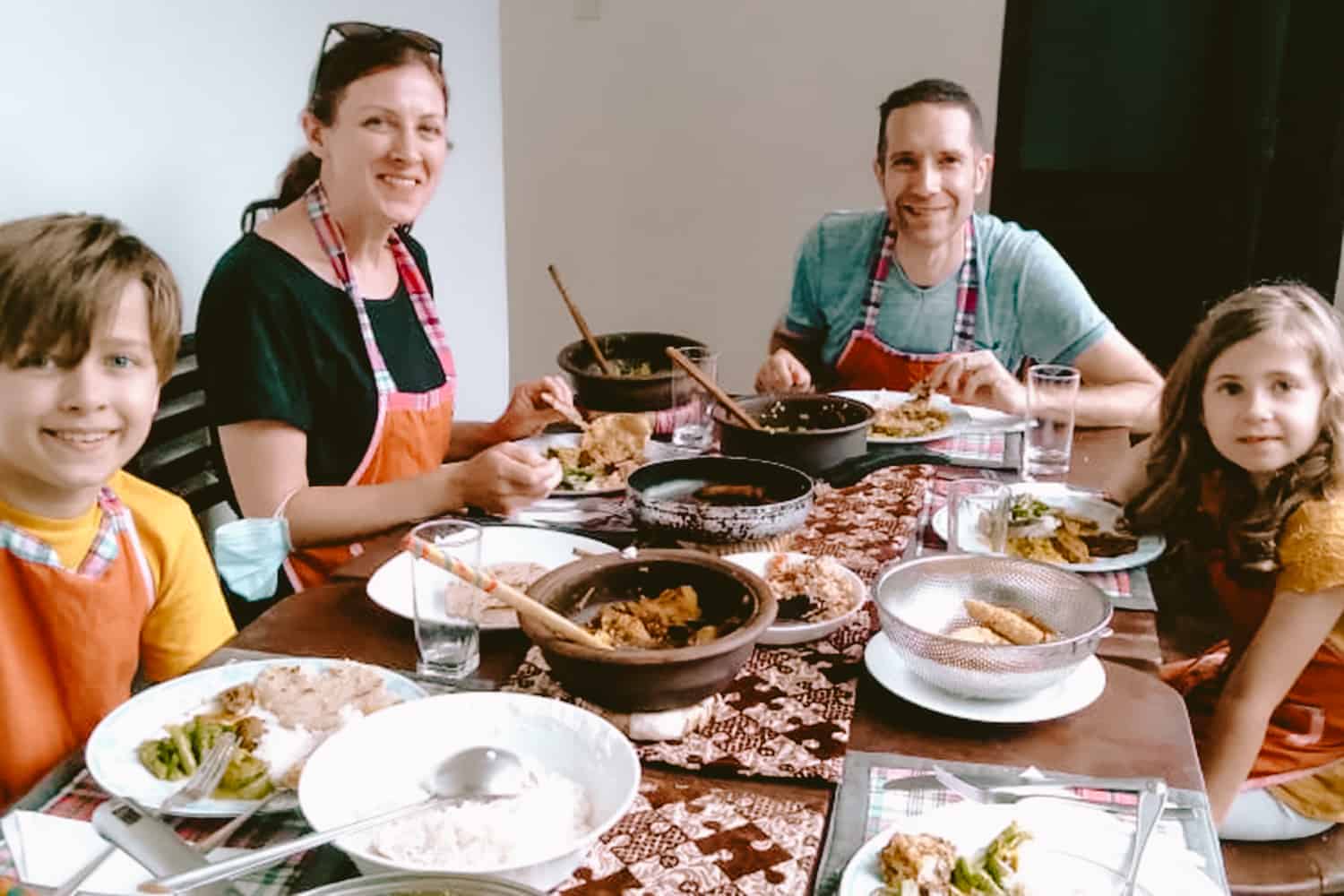
Enroll yourself in a cookery class to learn the art of cooking Sri Lankan. It is going to be the yummiest family adventure of your Sri Lanka holiday.
There are families that welcome visitors into their home kitchens and share their culinary wisdom that was passed down to them over the generations.
In these cooking lessons, you will be informed not only about which ingredients create the coconutty and spicy meals that you find in Sri Lanka, but also the rationale behind adding these ingredients into the food we eat. The various ingredients have different qualities: some add flavour and aroma to the food, while others have medicinal properties. To learn about these and more from experts in the field, put on your chef hat and apron, and step into a cookery class!
Embarking on a culinary voyage may also add variety to an itinerary that includes nature and historical excursions. Also, it is an indoor experience that the whole family can enjoy!
In Travellers Isle itineraries, cookery classes are usually incorporated into days you spend in Ella. This does not mean that they are restricted to this specific region. You will be able to enjoy this experience in other areas too.
Summary
Sri Lanka is a mesmerizing place to travel as a family. Its spectacular mountain ranges, breathtaking coastal regions, luxurious wildlife and proud cultural heritage combine together to make your family trip a holiday of a lifetime.
I hope this article helps your family have a wonderful holiday in Sri Lanka. Feel free to leave a comment if you have any questions. Please get in touch if you would like to get our assistance to organize your holiday. We at Travellers Isle are looking forward to assisting you.
Happy Travels!

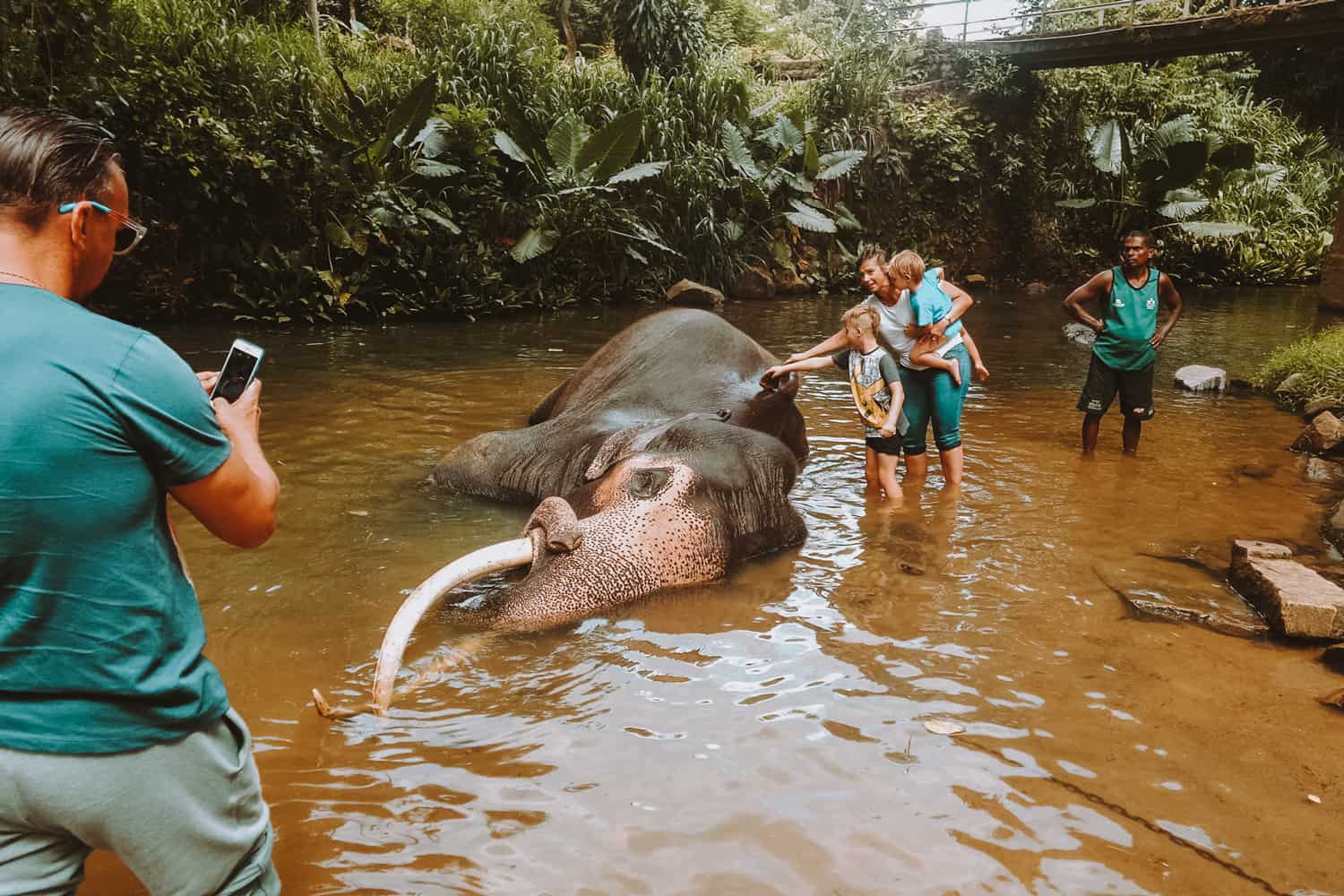
2 thoughts on “Top 10 things to do in Sri Lanka with family”
Would be great if you did things to do for couples with low mobility.
Thanks Lucy for the great suggestion. We will be sure to write an article covering this topic.